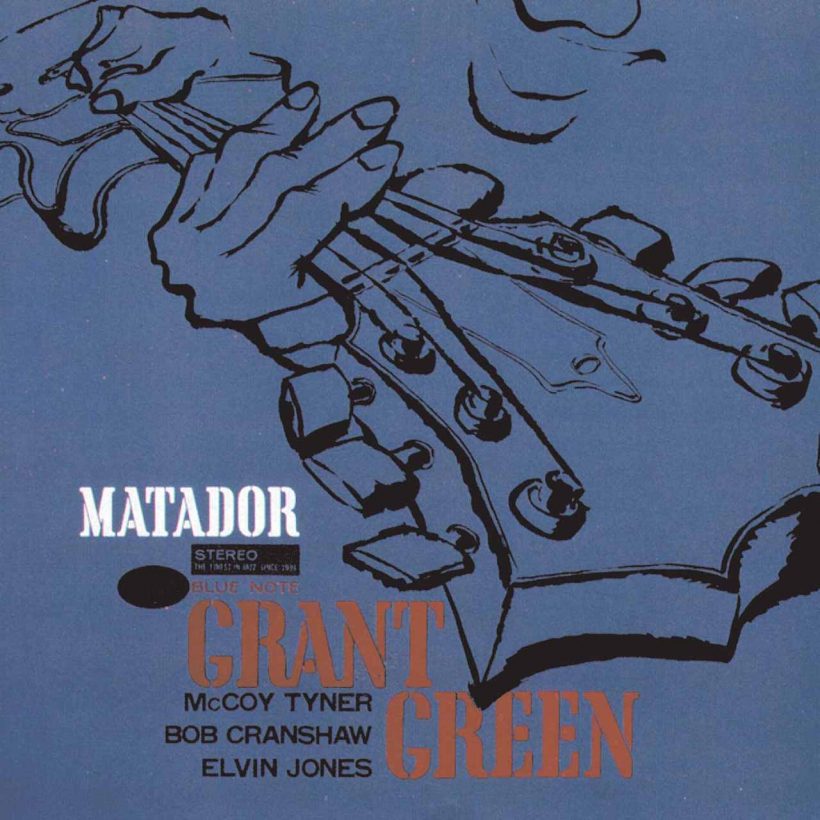‘Matador’: Grant Green’s Top-Shelf Modal Jazz LP
One of the jazz guitarist’s best records was recorded in 1965 with two Coltrane sidemen.

Grant Green was discovered playing in a bar in his hometown, St. Louis, by alto saxophonist Lou Donaldson, who hired the young guitarist and put him on the radar of Blue Note producer Alfred Lion. A self-taught musician steeped in the blues, Green, who idolized bebop saxophonist Charlie Parker, approached the guitar like a horn player – he rarely played chords, instead producing long streams of single-note melodic lines. Green moved to New York in 1959 and began recording for Blue Note the following year. Although his maiden recording for the label wasn’t released until 2001, when it surfaced as First Session, Green quickly became the label’s go-to guitarist, appearing on dozens of Blue Note sessions, which ranged from bluesy hard bop (Hank Mobley’s Workout) and gospel-infused soul jazz (Don Wilkerson’s Preach Brother!) to more progressive, forward-looking albums (Lee Morgan’s Search For The New Land).
After a November 1963 session at Van Gelder Studio that produced his highly regarded Idle Moments album, Green’s next trip to the studio as a leader was in May the following year to record Matador, which found him hooking him up with noted bassist Bob Cranshaw, whose credits already included Max Roach and Sonny Rollins, and two of contemporary jazz’s most consequential musicians at the time: Pianist McCoy Tyner and drummer Elvin Jones, who were both members of the much-feted John Coltrane Quartet.
Listen to Grant Green’s Matador now.
Green was familiar with Jones, having made his debut recording alongside the powerhouse Detroit drummer on saxophonist Jimmy Forrest’s 1959 album All The Gin Is Gone, but it was his first time in the studio with Tyner. Both of Coltrane’s men brought to the session’s four long tracks a powerful synergy that rubbed off on Green, whose fretwork throughout proved impeccably fresh and inventive.
Matador was Green’s first album to explore modal jazz, a style that rose to prominence largely thanks to Miles Davis’ 1959 album Kind Of Blue and was dictated by scales and key modulations rather than chord sequences, leading to looser and more open-ended music. The Green-penned “Green Jeans” is a perfect example of modal jazz as is his zesty revival of “My Favorite Things,” the Rodgers and Hammerstein song famously recorded and transformed by John Coltrane in 1960. Tyner and Jones, who featured on Coltrane’s version, imbue the piece with a similar, 6/8 feel, allowing space for the soloists to stretch out. A different flavor is brought to the session by the Middle Eastern-tinged “Bedouin” – penned by pianist Duke Pearson – which features a dynamic Jones drum solo.
Green was one of several Blue Note musicians who were so prolific in the studio that the label couldn’t keep pace with their creativity. While Matador was recorded in May 1964, it wasn’t released until fourteen years later (and then only in Japan). Eleven years after that, Matador debuted on CD in the US. Matador was one of nine lost Green sessions – all of high quality – that producer Michael Cuscuna discovered during his tenure with the label between 1975 and 1981. Hearing Matador is like discovering a lost chapter in Grant Green’s discography. He had already proved his versatility in recordings for Blue Note showing his ability to switch effortlessly between bebop, soul jazz, hard bop, blues, funk, and Latin music, but Matador offered conclusive proof that he could play more progressive jazz with the same level of authority, credibility, and aplomb.












